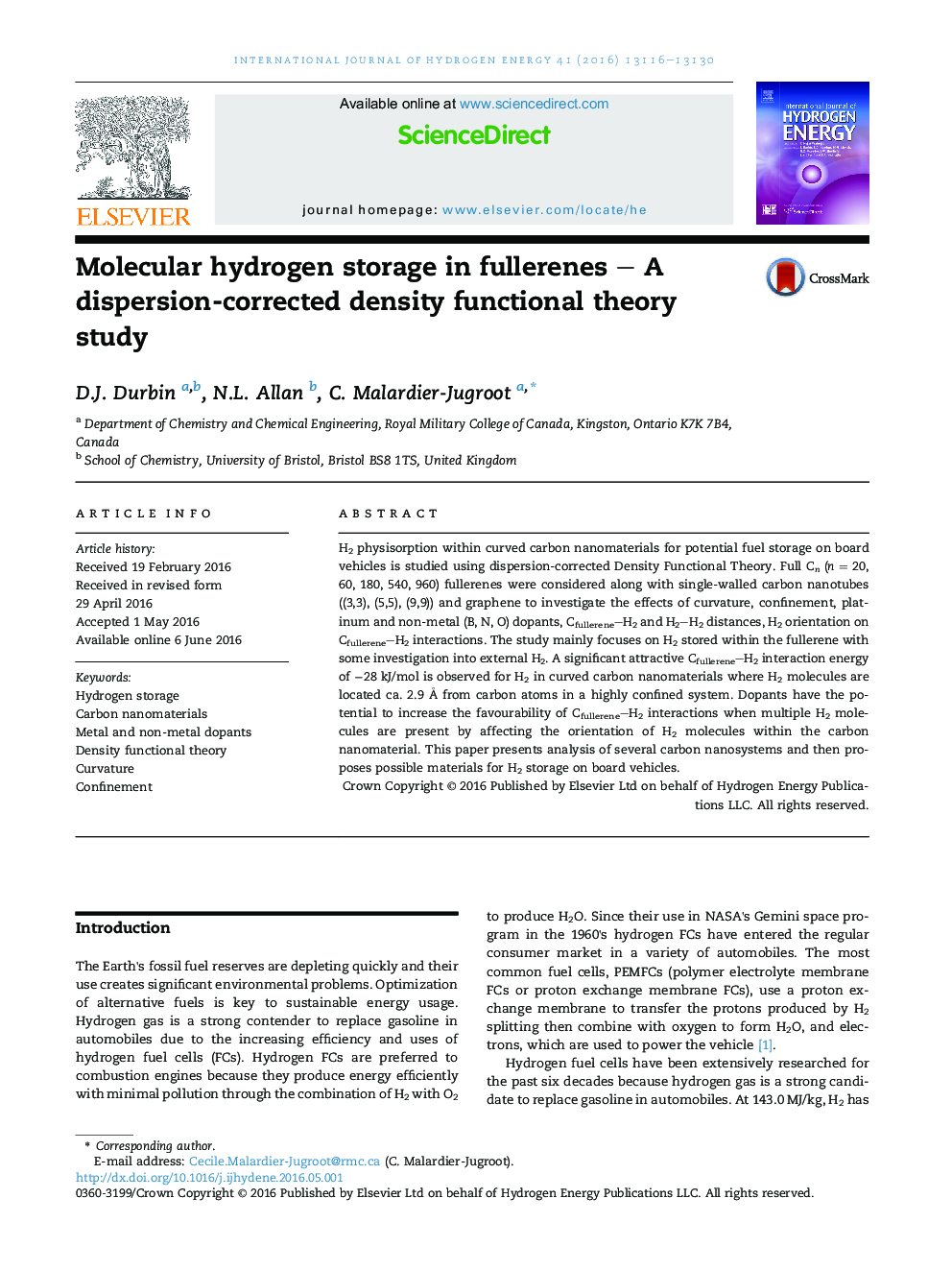| کد مقاله | کد نشریه | سال انتشار | مقاله انگلیسی | نسخه تمام متن |
|---|---|---|---|---|
| 1268226 | 1497395 | 2016 | 15 صفحه PDF | دانلود رایگان |
• Ab initio study investigating hydrogen adsorption in curved carbon nanomaterials.
• Carbon nanotube/fullerene hybride or a C20 crystal structure have potential for H2 storage on board vehicles.
• Cfullerene–H2 interactions can be strengthened by adding heterogenous dopants, such as a heme group, to the fullerene.
H2 physisorption within curved carbon nanomaterials for potential fuel storage on board vehicles is studied using dispersion-corrected Density Functional Theory. Full Cn (n = 20, 60, 180, 540, 960) fullerenes were considered along with single-walled carbon nanotubes ((3,3), (5,5), (9,9)) and graphene to investigate the effects of curvature, confinement, platinum and non-metal (B, N, O) dopants, Cfullerene–H2 and H2H2 distances, H2 orientation on Cfullerene–H2 interactions. The study mainly focuses on H2 stored within the fullerene with some investigation into external H2. A significant attractive Cfullerene–H2 interaction energy of −28 kJ/mol is observed for H2 in curved carbon nanomaterials where H2 molecules are located ca. 2.9 Å from carbon atoms in a highly confined system. Dopants have the potential to increase the favourability of Cfullerene–H2 interactions when multiple H2 molecules are present by affecting the orientation of H2 molecules within the carbon nanomaterial. This paper presents analysis of several carbon nanosystems and then proposes possible materials for H2 storage on board vehicles.
Journal: International Journal of Hydrogen Energy - Volume 41, Issue 30, 10 August 2016, Pages 13116–13130
